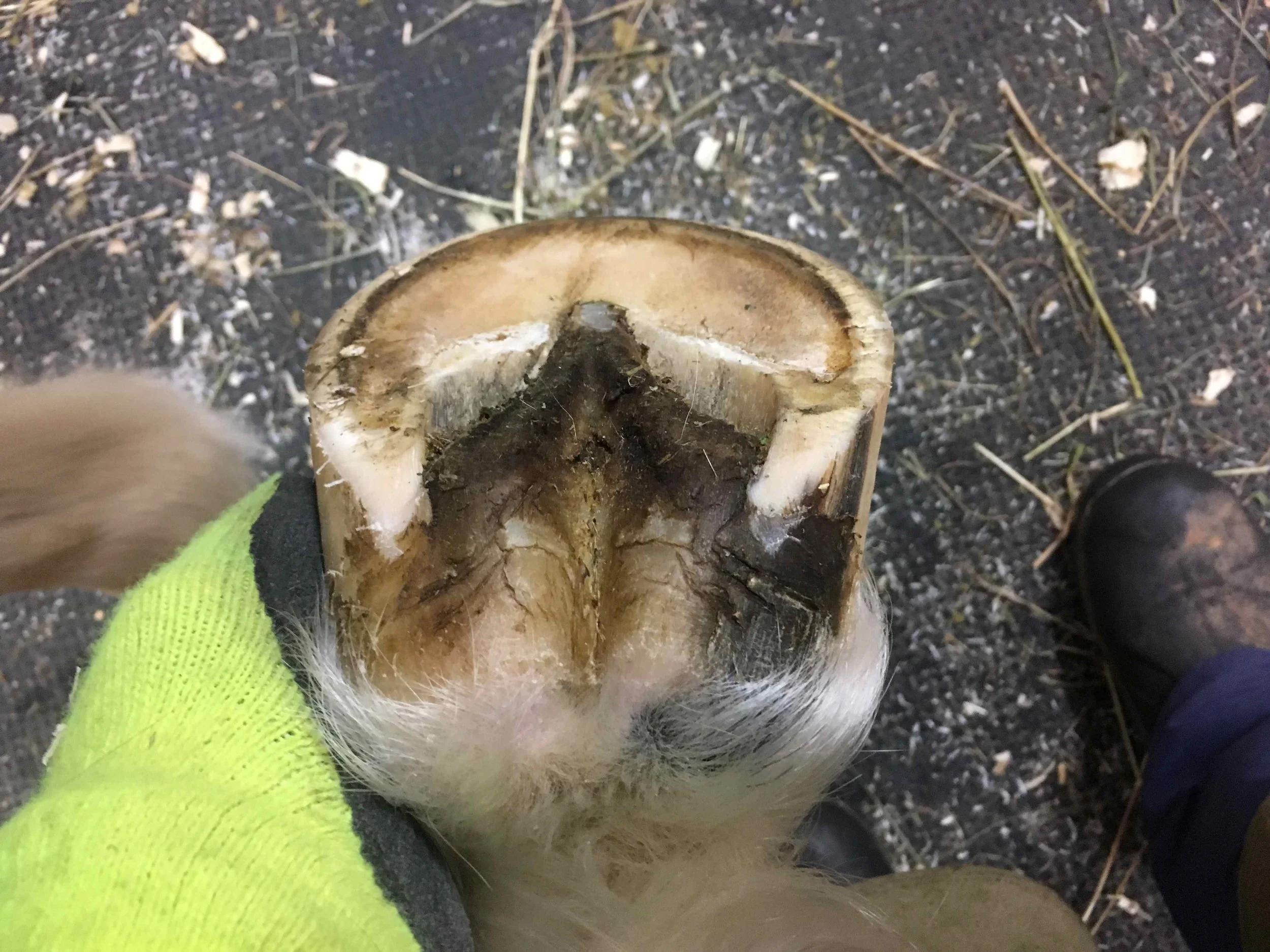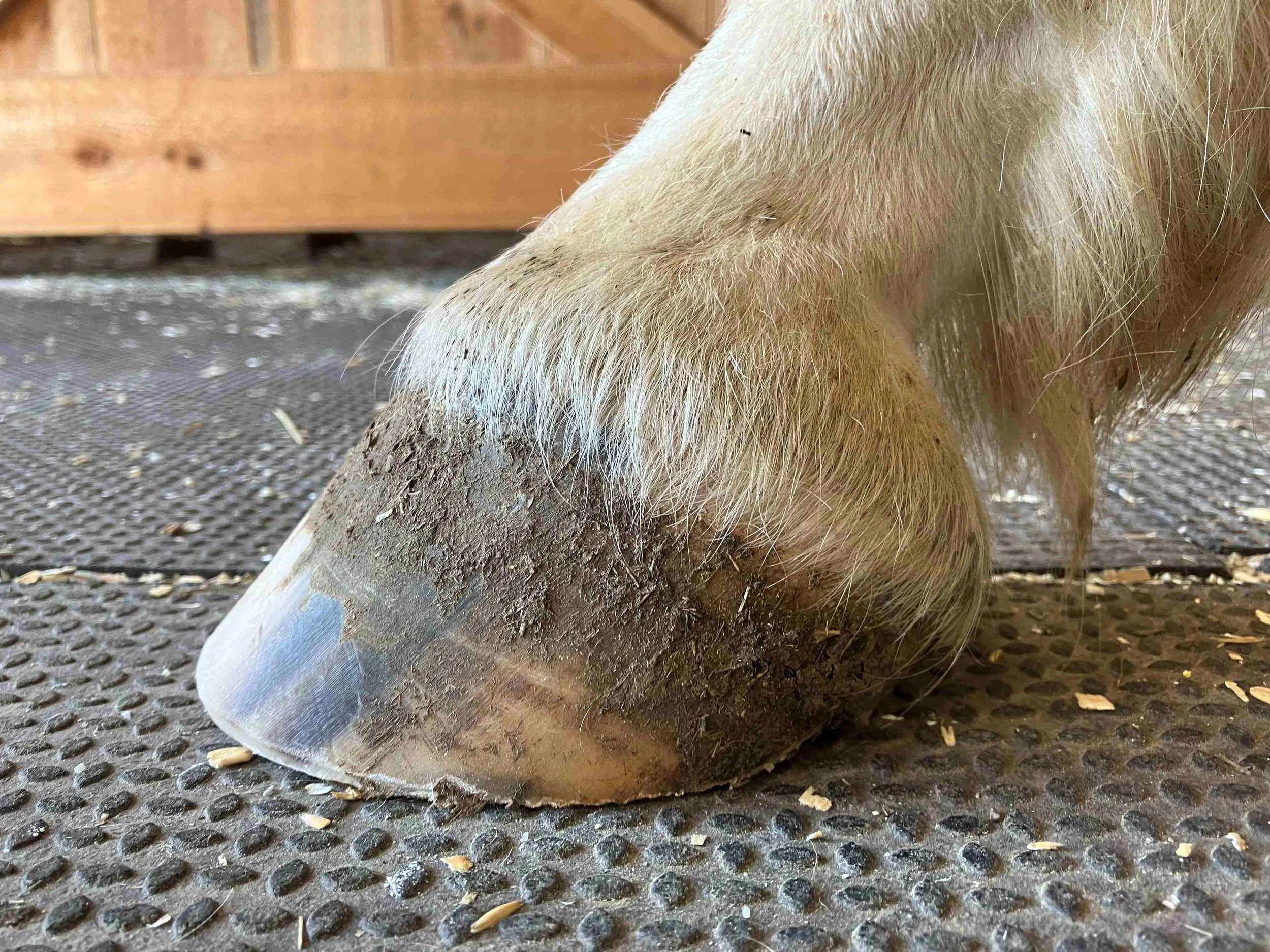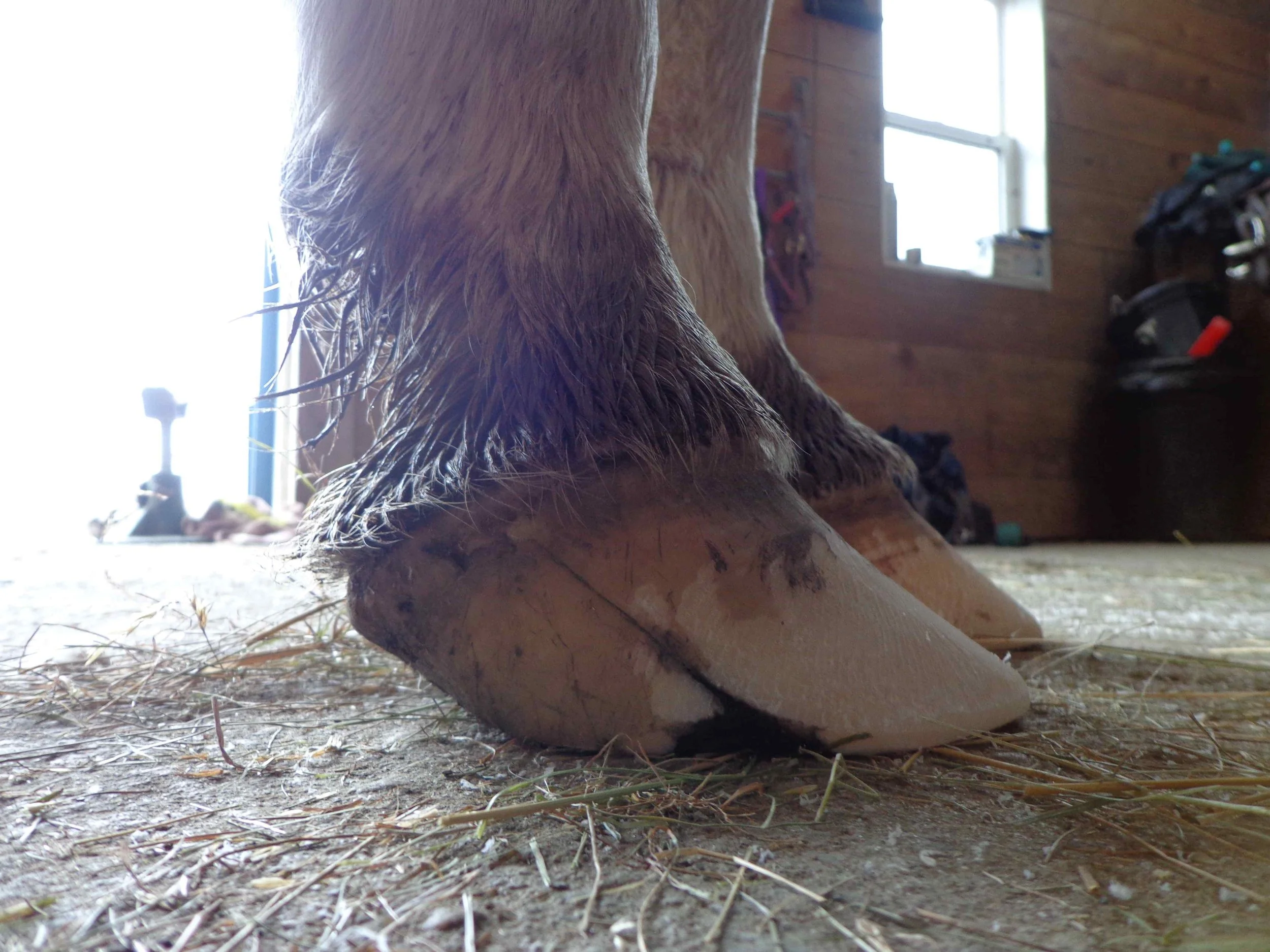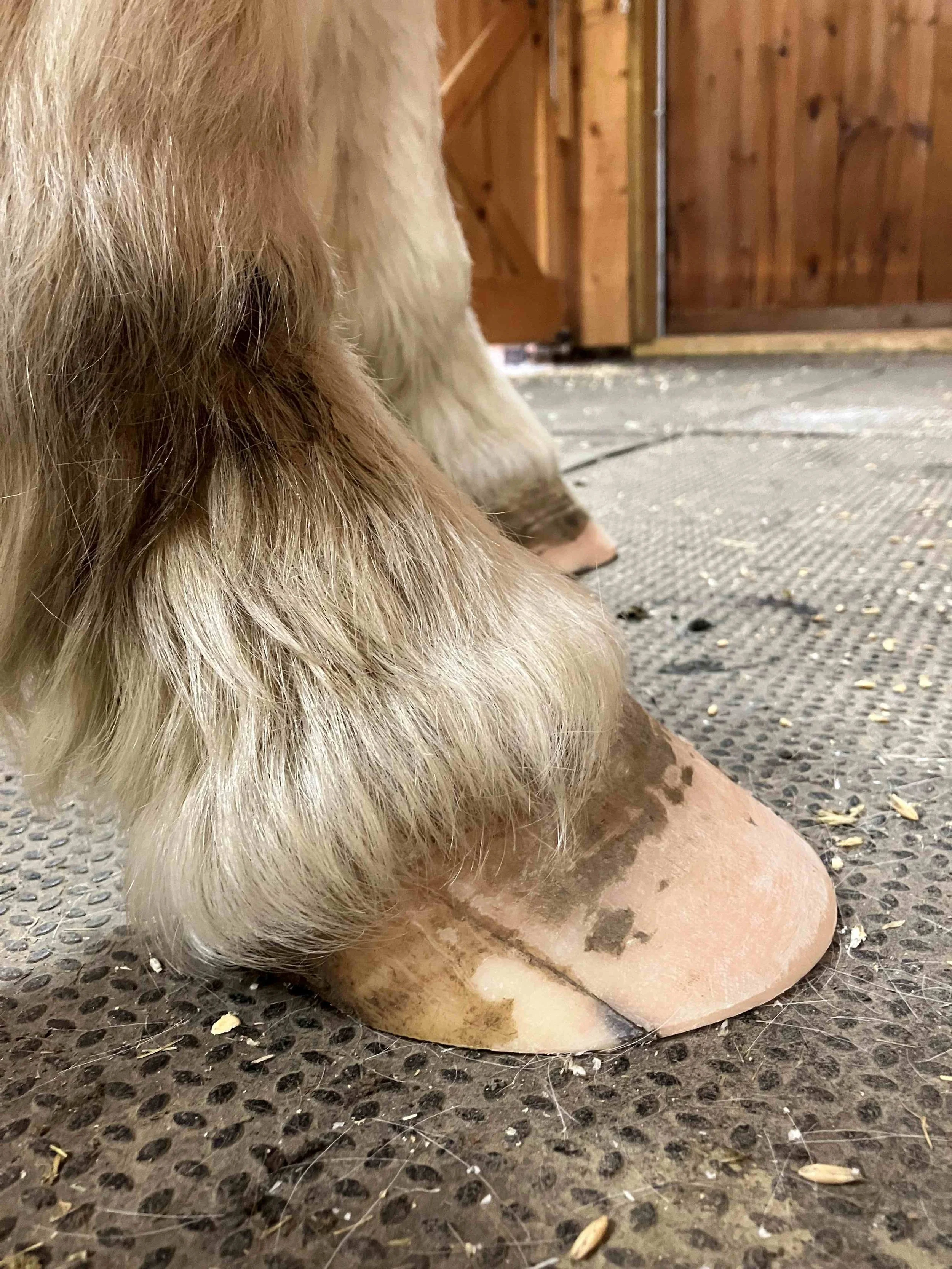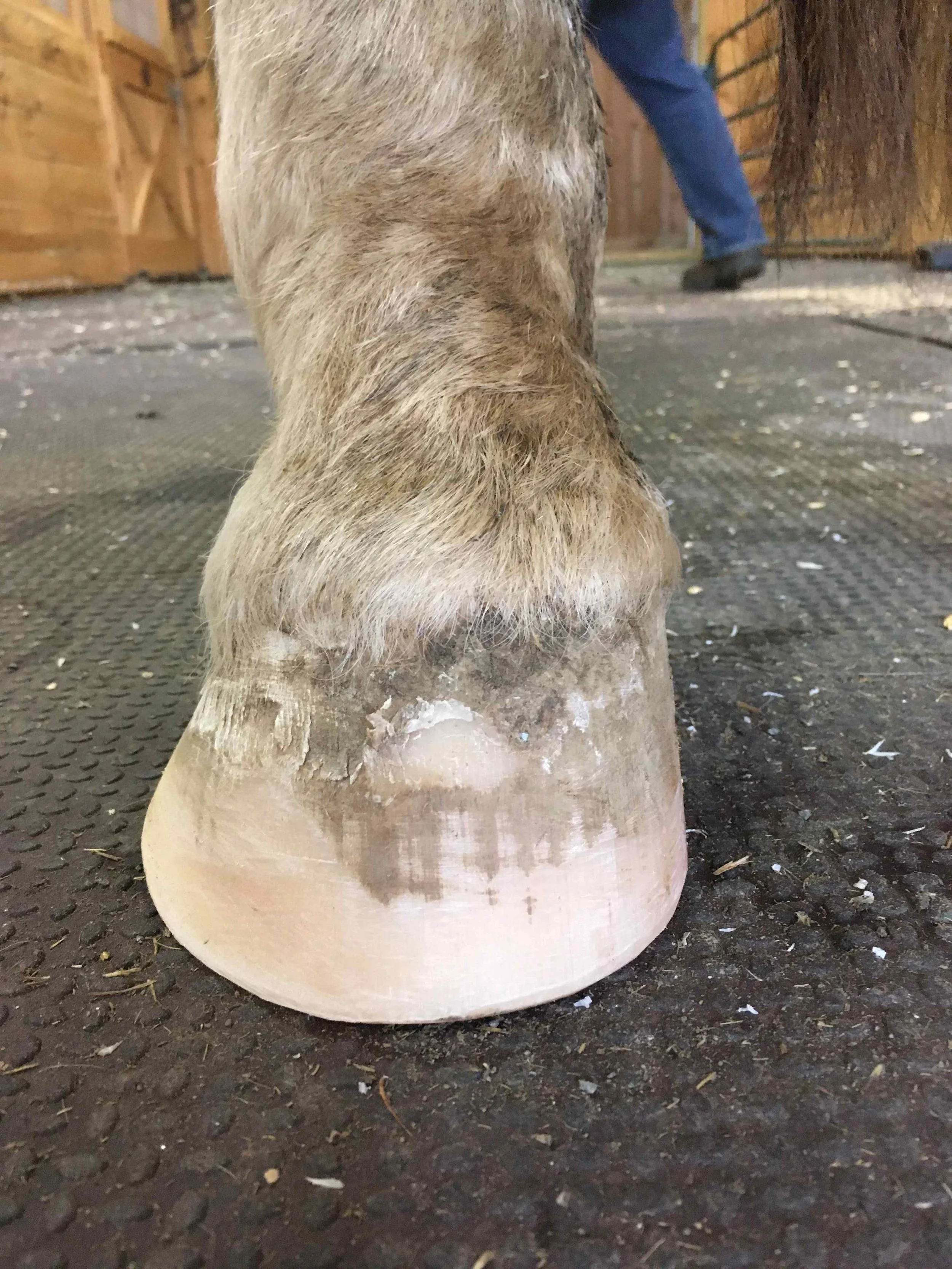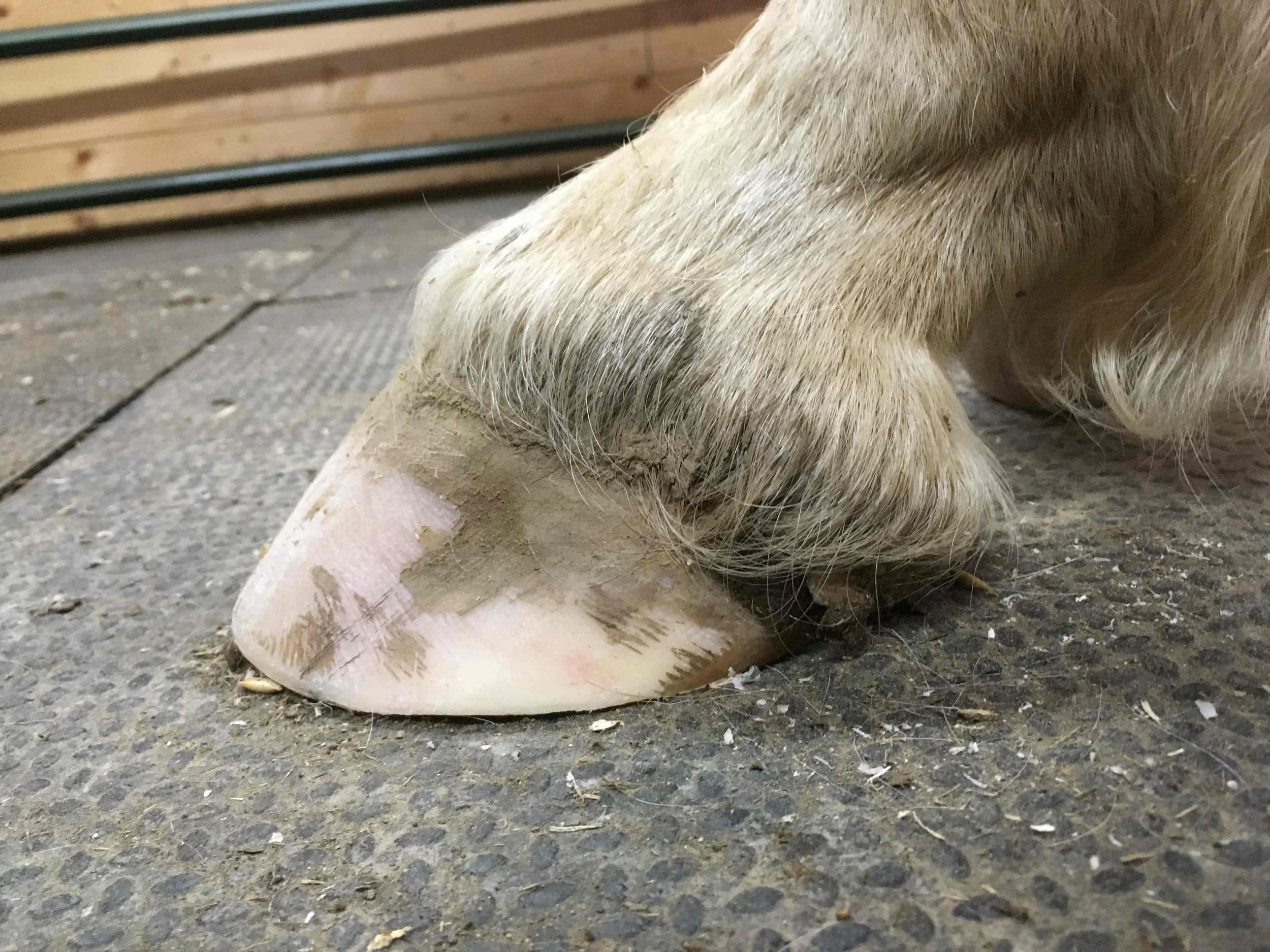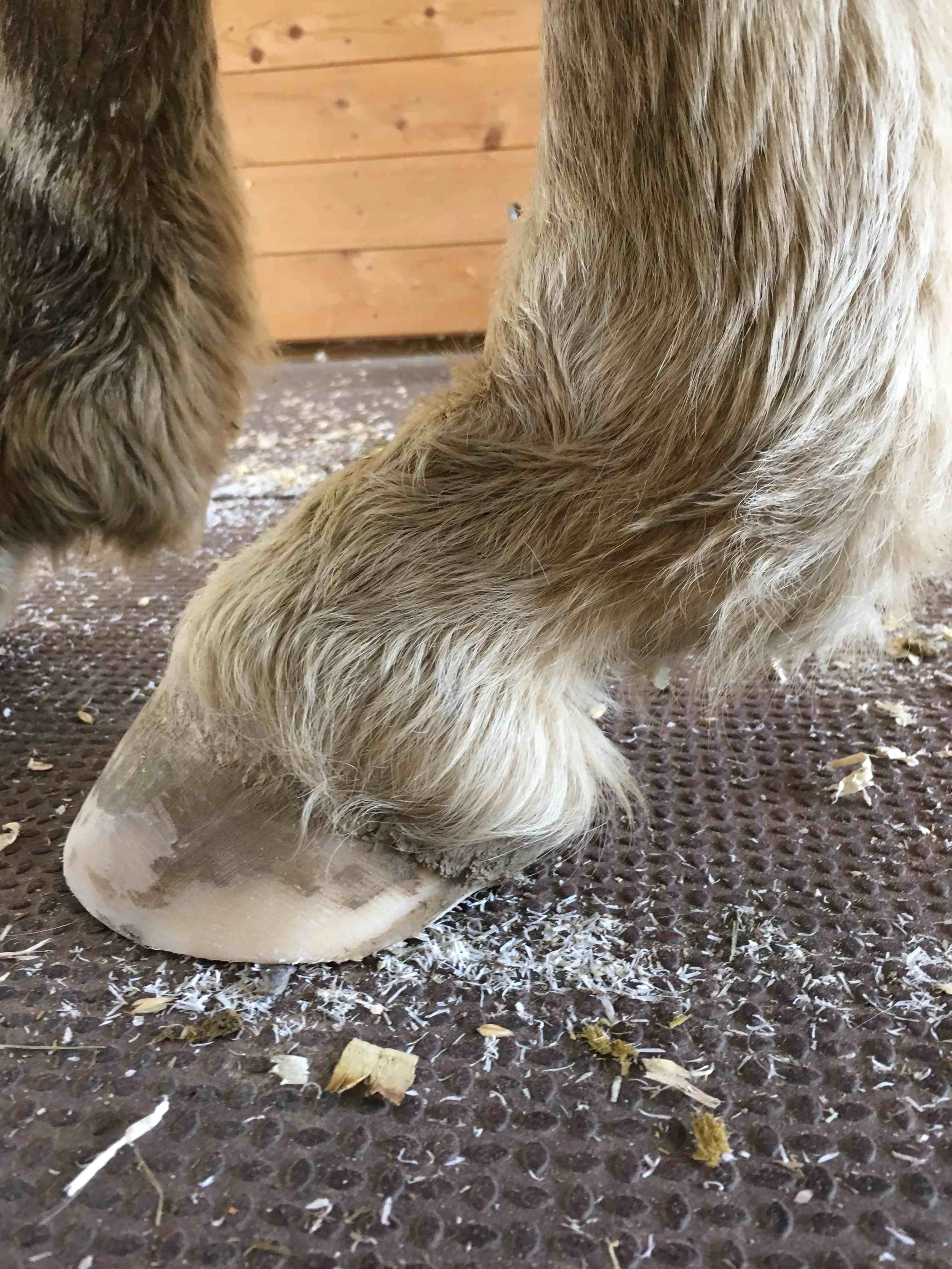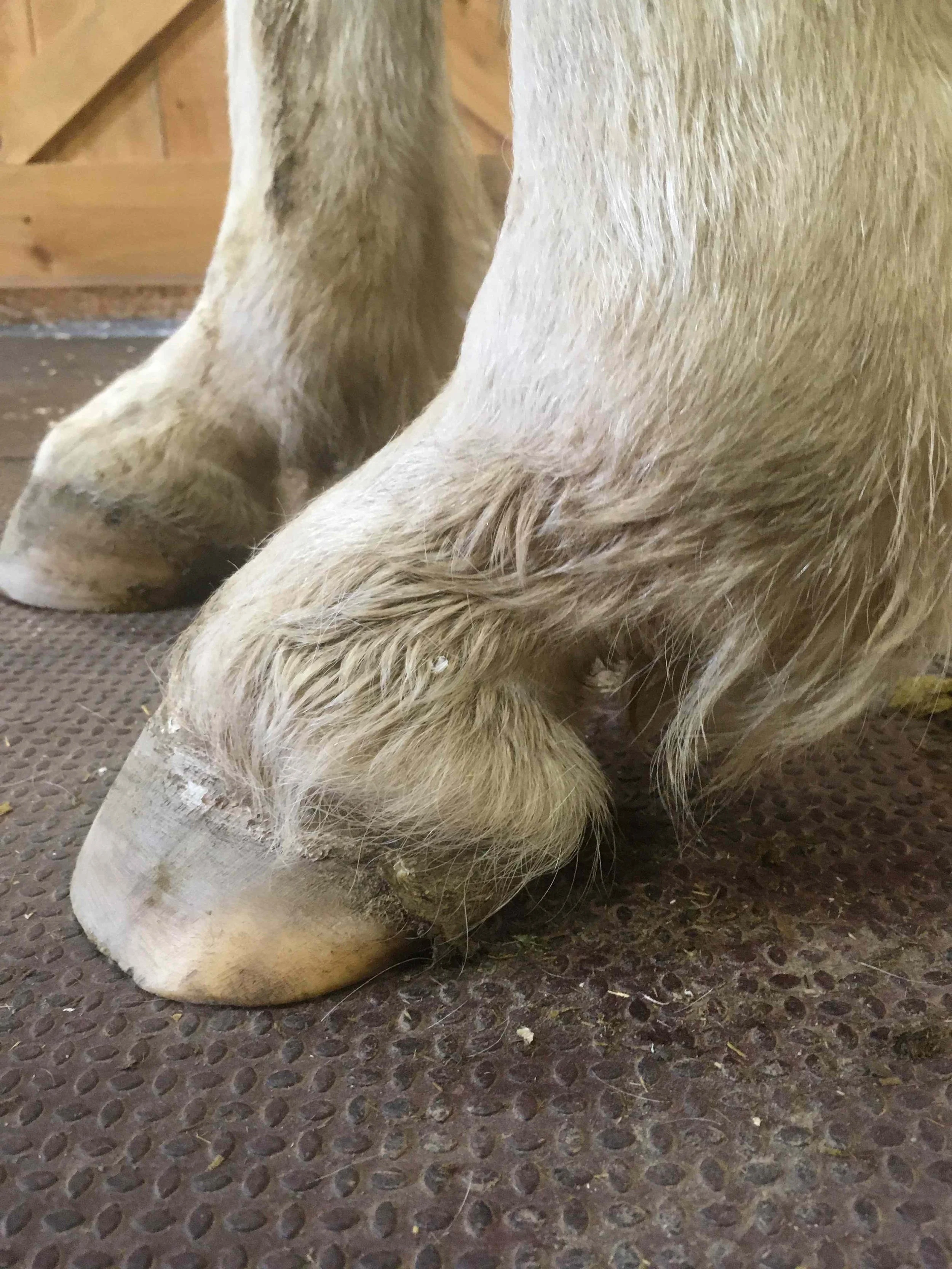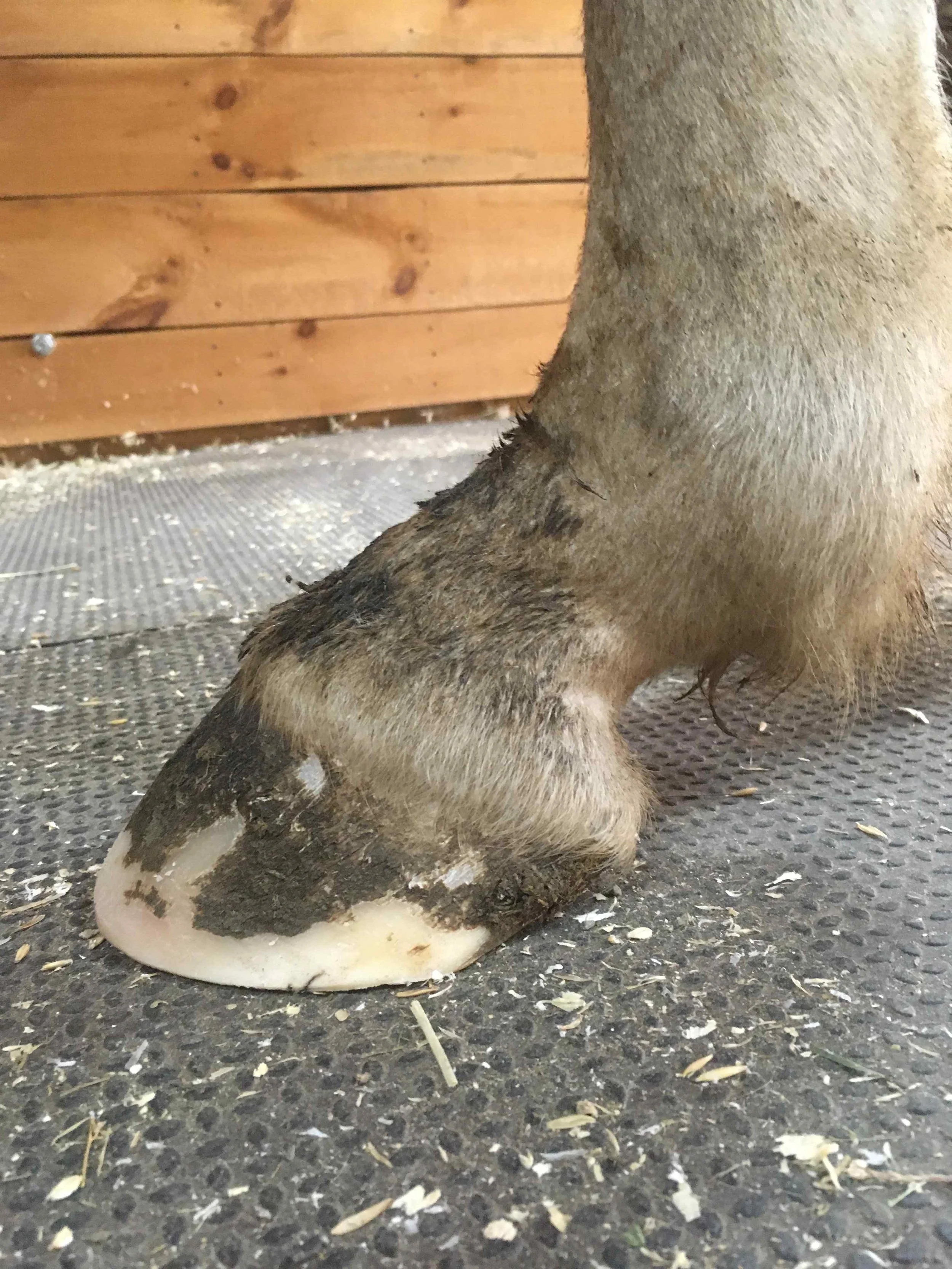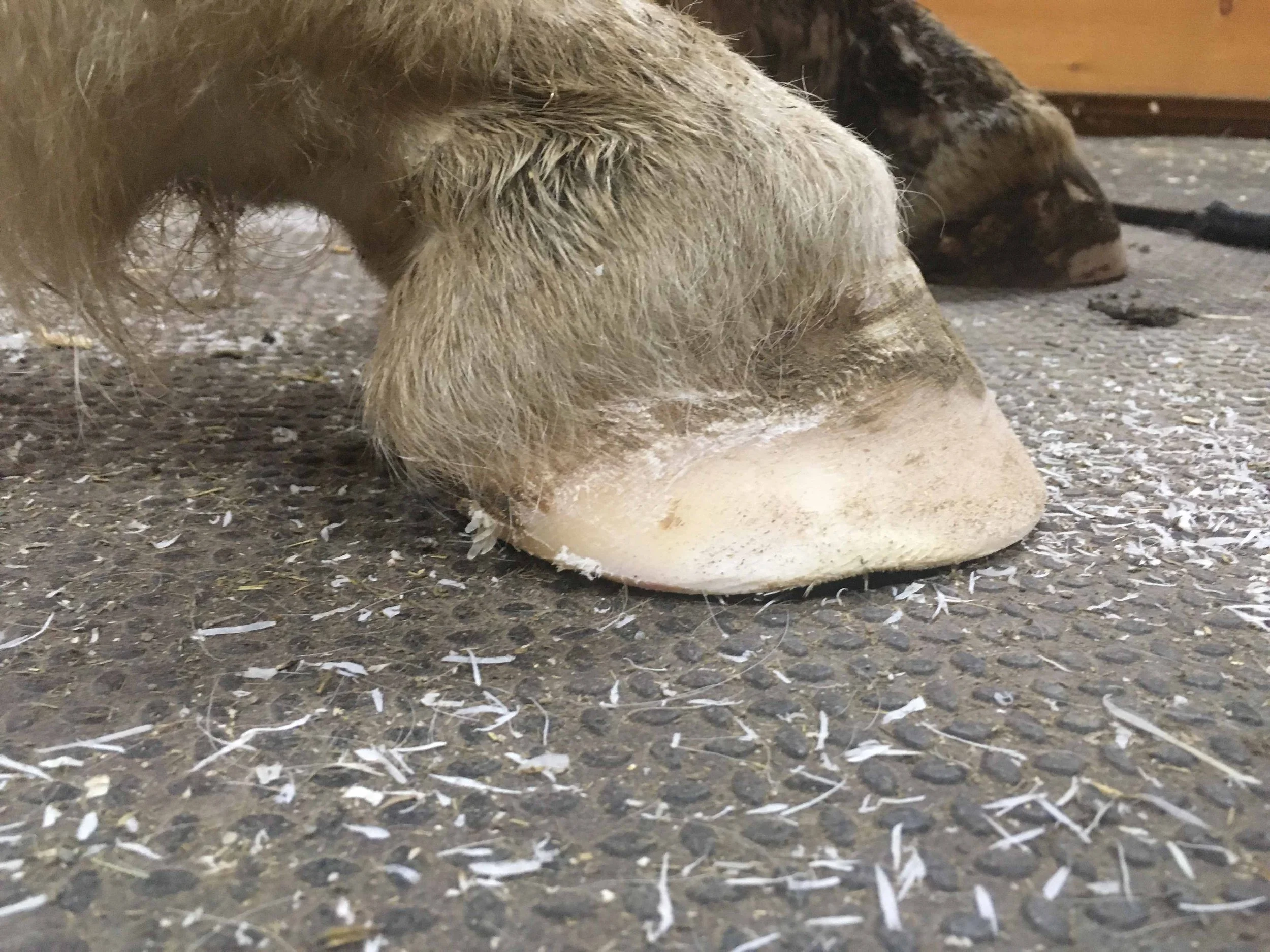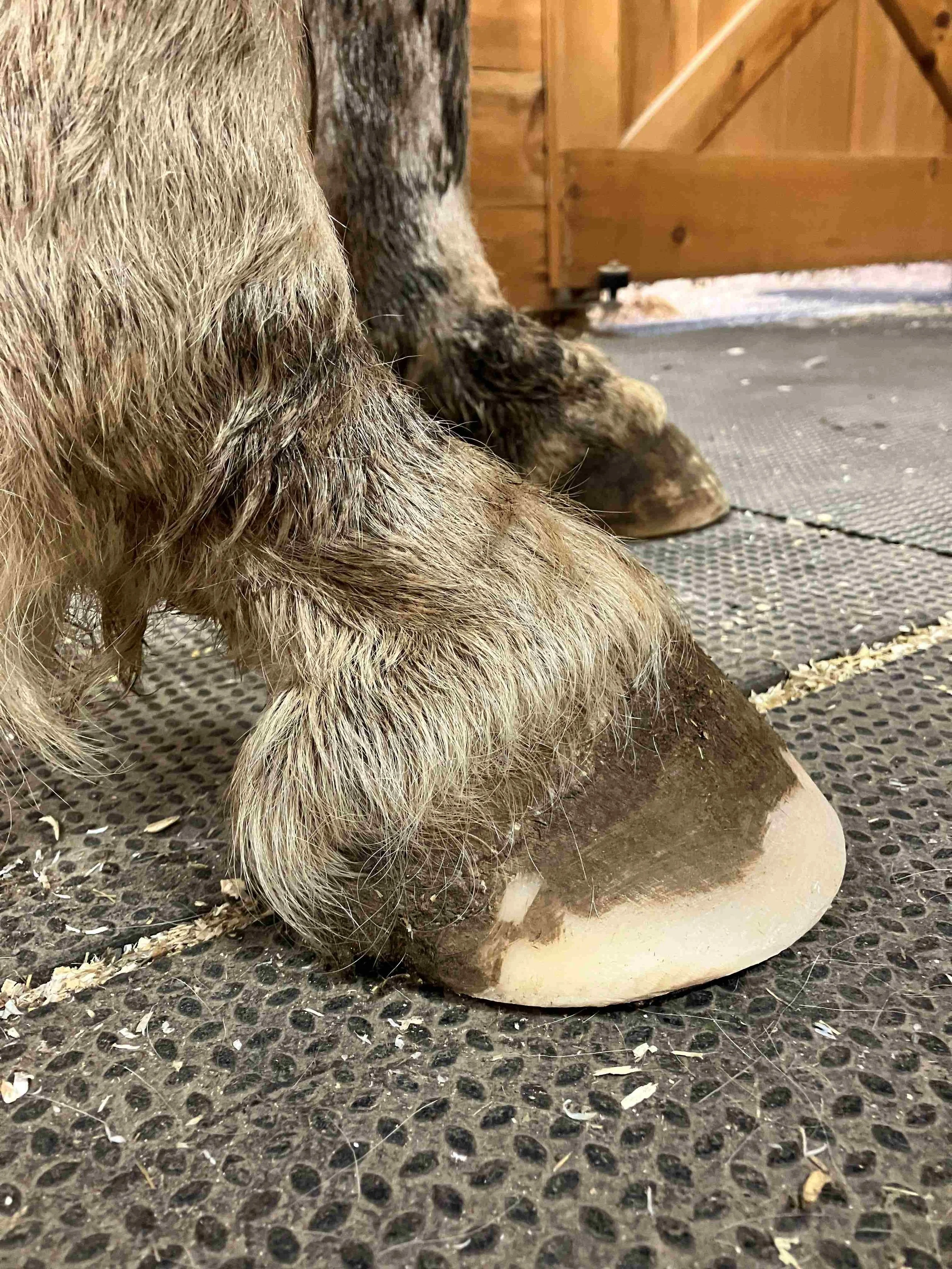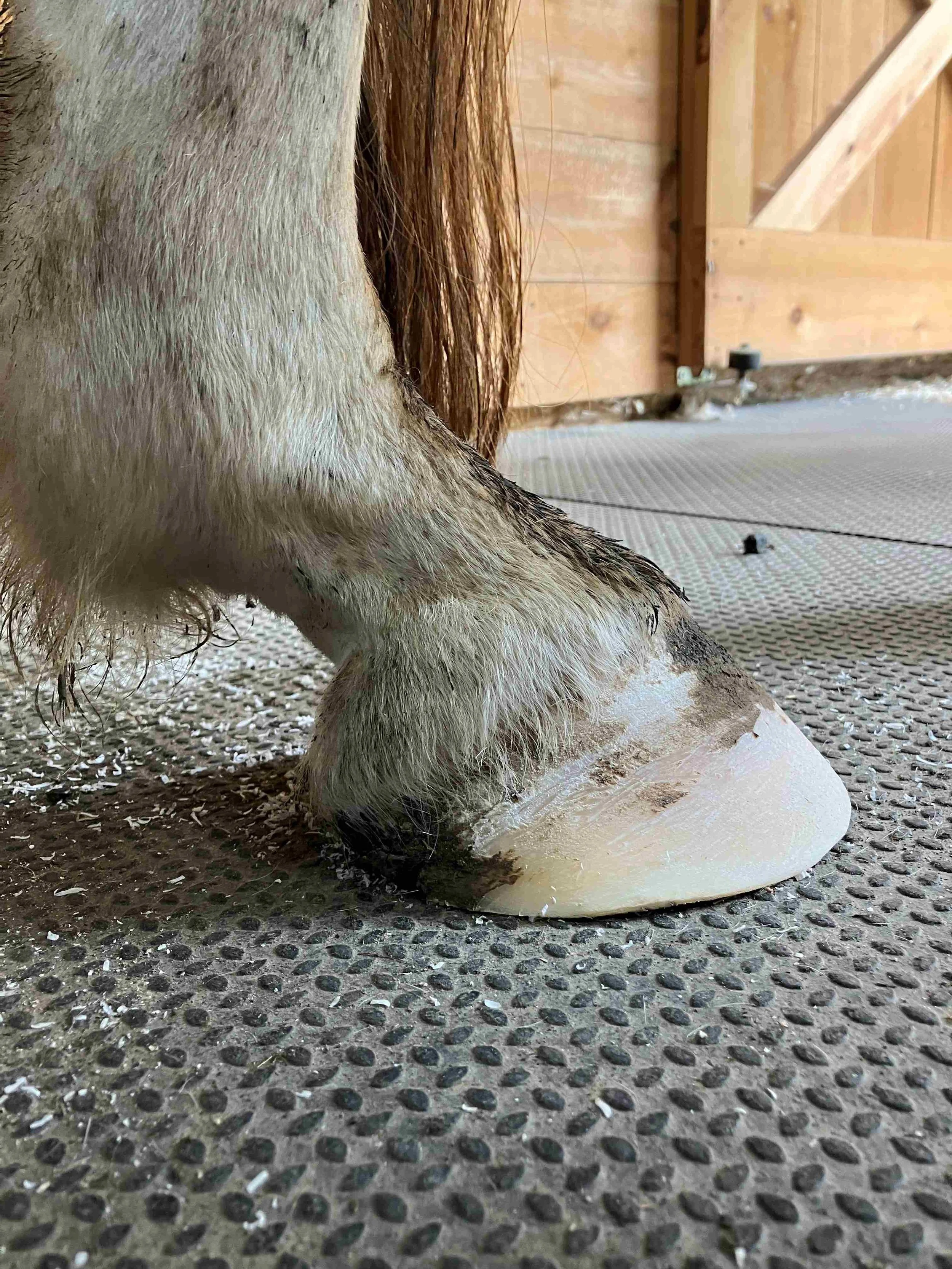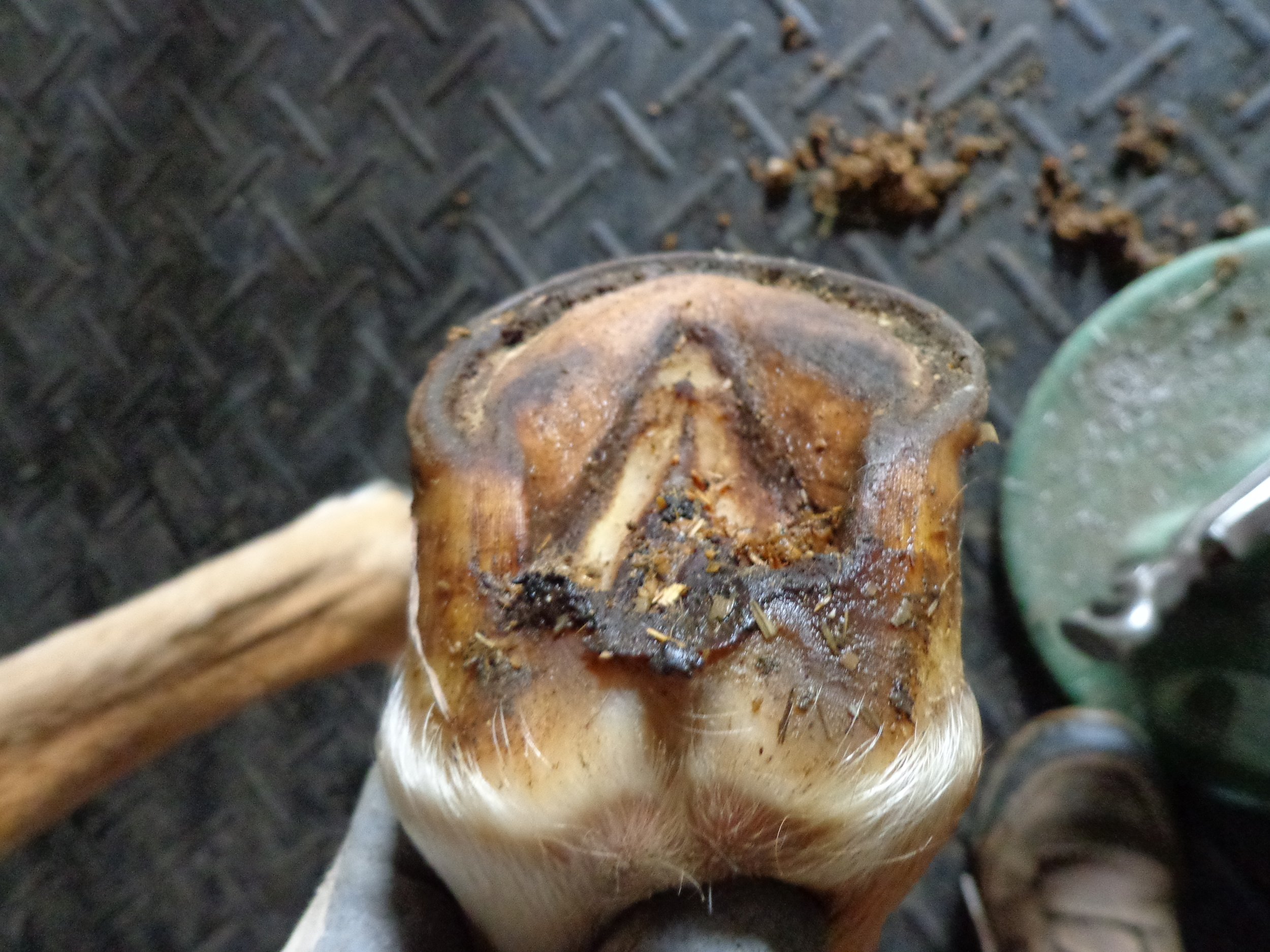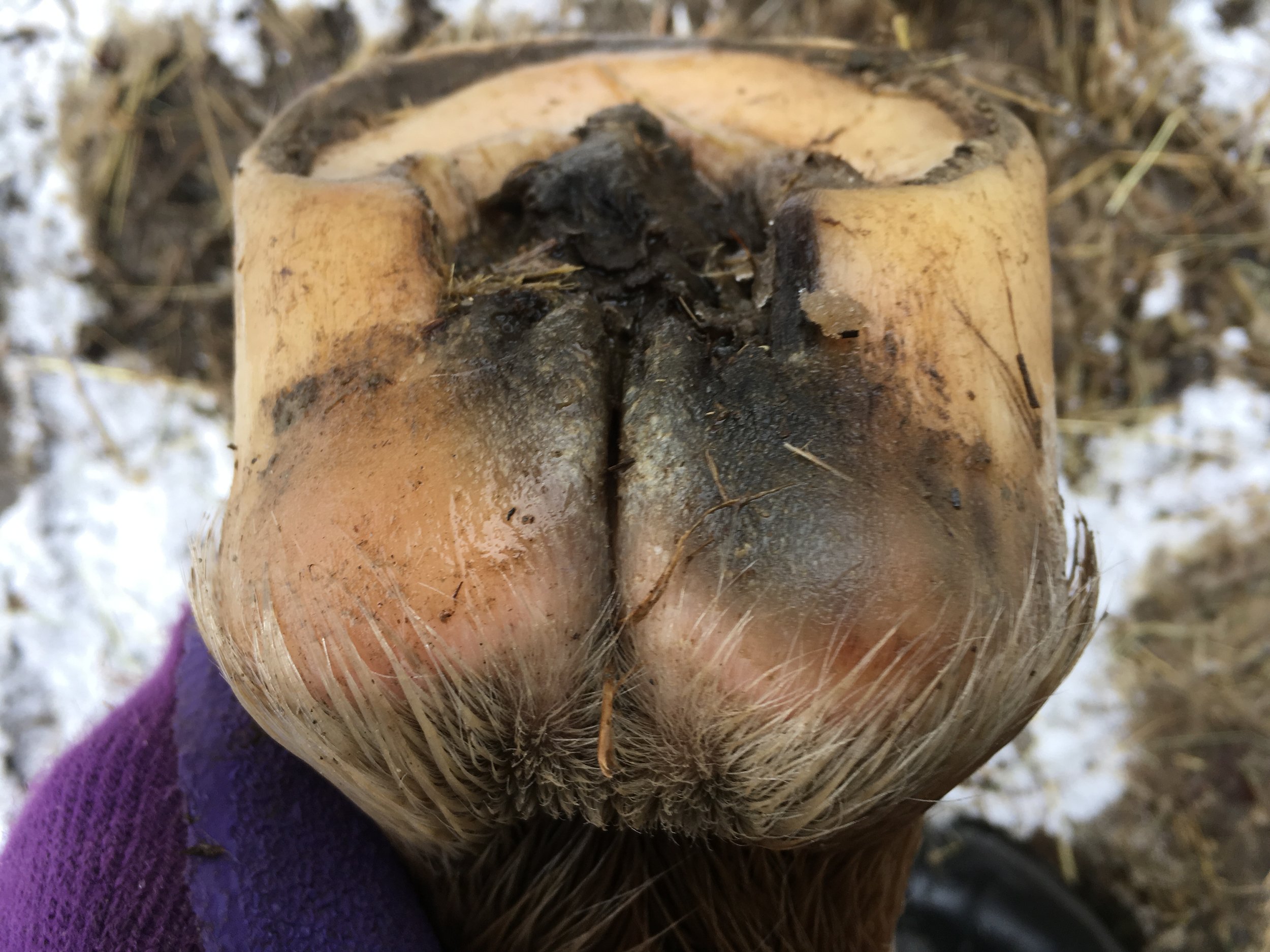Hoof, Body & Soul, Part III: Mission Impossible, unedited, by Gudrun Buchhofer. Blog 37, case #37
CHAPTER 1
Atrophy, the fundamental cause for most all hoof pathology and upper body injuries
Dropped fetlocks
Case # 37
Cheyenne
trimmed from December 2013 until September 2024
Cheyenne was a beautiful Paint Horse, pattern type Tobiano, born in Saskatchewan and shipped to Nova Scotia at some point. I started trimming Cheyenne when she was sixteen years old.
I found the broodmare in a lot of discomfort and it was very challenging to work on her. Cheyenne had dropped fetlocks in both hinds and she was not able to pick up her hind feet. I performed my first trim while she was lying down in a field where she had given birth to a foal a few weeks prior. For the following trims I placed Cheyenne's hind hooves on my shoe. Then I used my mini hoof stand. Treats were our saviour and gradually Cheyenne built up trust and stamina.
April 2019 — she clearly travelled to the right with both hinds and the right front — most likely she was curled up to the right in her mother’s womb and later maintained the crookedness
Cheyenne was still stuck with her unfinished baby hoof when I started her. She never had a chance to wear down about half of her hooves after birth. Both front hooves were equally part of the picture. Both fronts were long with weak internal structures (see above the hairline). The back of the hoof was unfinished and atrophied. The tips of the “false” heels were flared long. There was a huge bruise in the lateral heel bulb on the left front (below and above the hairline).
Left front February 2017 — there was a huge bruise in the lateral heel on the left front (below and above the hairline) as well as in the tip of the flared heel; bulb and frog tissue was still atrophied
Left front December 2013
Left front July 2023
Right front December 2013
Right front May 2024
Her problems arose from a lack of movement (over abrasive grounds) and atrophy of the back of the hooves. Just like in other dropped-fetlock-cases Cheyenne braced with the toes of her hinds and bull-nosed the medial toe. From the frontal view the hind hooves looked like crushed pop cans.
Right hind June 2016
Right hind November 2020
Through the mimicking of natural wear patterns I was able to help her to complete the variant capsule angle-of-growth in the back of the feet; develop internal structures; build heel bulbs; entangle the deformed hoof capsules and shorten them via divergent hooves over the course of the last eleven years. Eventually Cheyenne’s muscles picked up the dropped fetlocks in the hinds. The severe quarter crack in the right front closed. She abscessed from her right front fetlock joint in May 2024.
Left hind May 2018
Left hind January 2020 — jacking up the dropped fetlock
Left hind April 2020
Left hind October 2022
Right hind June 2021
Right hind May 2023
Right hind August 2024
“The most important journey with her was being able to lift her feet for you. She wasn’t sound at the trot when we received her. She has been sound at the trot for a couple years now. She goes full tilt with the other two where she used to stand back out of the way and watch them. Her personality changed from being so distant to a loving mare who nickers at you when she sees you. We are so blessed that you could bring this girl back pain free.” Bonnie and Darrel S., in the spring of 2023.
For the last eleven years of her life Cheyenne lived the herd life in the company of two other horses with 24/7 freedom. The only time she came inside the barn was for trimming. The environment was crusher dust paddocks and trails. Her diet was fairly natural with 24/7 access to hay. There was no access to green grass pastures.
Photo: Bonnie Swinimer
Cheyenne was put to rest in October of 2024 at the age of 28. ♥
photos: Gudrun Buchhofer
Stay tuned for the upcoming cases (under my care for up to 20 years) in this blog series as a replacement for the unpublished part III: Mission Impossible of my trilogy Hoof, Body & Soul.
What did all my client horses over the last 20+ years have in common? They needed to heal from atrophy of the back of the foot as well as other atrophied hoof structures.
Q: Why do we need to change the upbringing of our baby horses and donkeys? A: To prevent senseless suffering.
Gudrun Buchhofer


